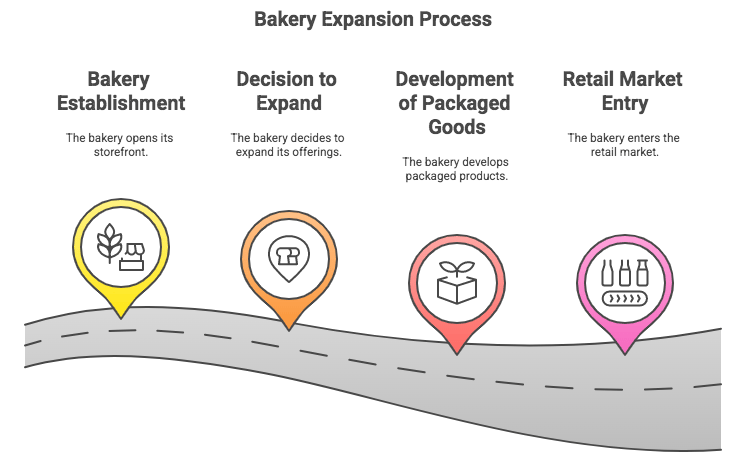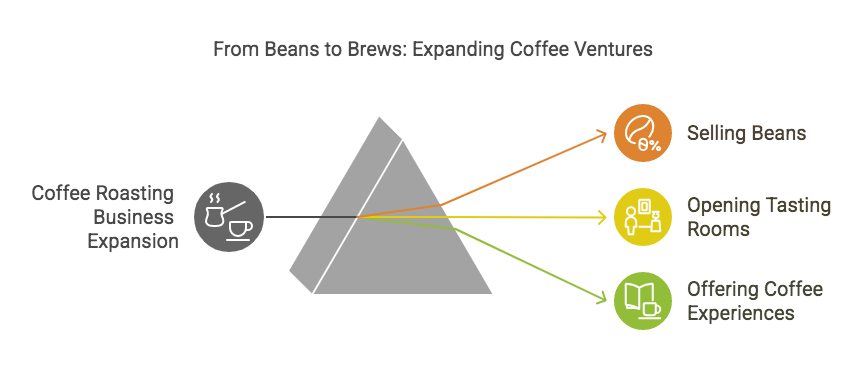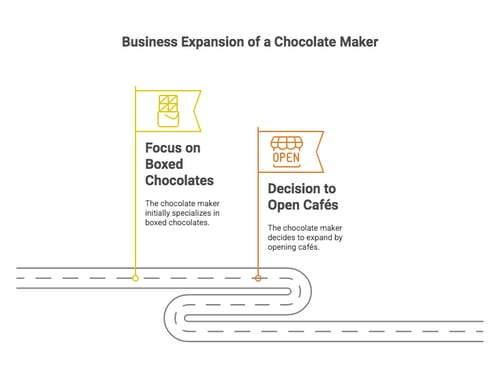Why filing trademarks in both Classes 30 and 43 creates a comprehensive protection strategy for food-related businesses🛡️
Think of Class 30 as protecting what you sell, while Class 43 protects how you sell it.
This dual-class trademark strategy creates a protective barrier around both your products and the experience of consuming them...
Imagine opening an artisanal coffee shop called "Morning Bloom." If you only register in Class 30, you're protecting your coffee beans, pastries, and other food items.
However, another business could potentially open a "Morning Bloom Café" and offer dining services under your brand name. This could create customer confusion and dilute your brand value, even though they're not selling the exact same products.
The strategic value of filing in both classes becomes apparent when we consider the modern food business landscape.
We also handle Provisional refusal of trademark applications in India when international trademark is filed & India is designated under the Madrid protocol.


Successful food brands often evolve through several business phases🌟
Phase 1: Product-Only Business
You might start by selling packaged coffee beans and pastries (Trademark Class 30). This trademark class covers your initial business model.
Phase 2: Service Integration
As your brand grows, you open a café where customers can enjoy your products in a curated environment. Without Class 43 protection, competitors could capitalize on your brand's reputation in the service space.
Phase 3: Hybrid Business Model
Many successful food businesses operate in both spaces simultaneously - selling packaged products for home consumption while operating dining establishments. Think of Starbucks, which sells both coffee beans in supermarkets (Class 30) and operates cafés worldwide (Class 43).
The business advantages of dual-class registration include🌟
Trademark Experience Protection
Trademark Class 43 protects the entire customer experience, including ambiance, service style, and presentation methods. This becomes particularly valuable as brands increasingly focus on experiential elements.
Trademark Franchise Opportunities
Having both trademark registrations makes your brand more attractive for franchising, as you can license both product manufacturing and service provision rights.
Trademark Revenue Stream Security
Different revenue streams (retail products and dining services) are protected separately, allowing for more flexible business expansion.
Market Position Defense:
The trademark combination in both classes ( class 30 and class 43) creates stronger legal standing against potential infringers who might attempt to use your brand in either capacity.
Real-world scenarios where dual trademark registration proves valuable
A coffee roaster starts by selling beans but later wants to open tasting rooms
A bakery begins with a storefront but expands into packaged goods for retail
A chocolate maker who initially focuses on boxed chocolates decides to open dessert cafés
How to Trademark a Name and Logo
To trademark a name and logo in one trademark application depends upon the business strategy. Ensure that both elements are included in the trademark registration application and that they meet the legal requirements set forth by the Trademark Act of 1999.
International Trademark Filing Strategies
The Madrid Protocol system allows you to file international applications based on your home country application.
Start with a comprehensive Indian trademark application that covers your actual business needs in one or more countries. Once the basic trademark application is filed in India then international trademark application can be filed claiming the first basic trademark application filed in India.
Common Pitfalls to Avoid while Filing Basic Trademark Form in India
The most dangerous traps often come from descriptions that are:
Too vague ("computer services" instead of "software as a service for project management")
Too broad ("all goods in Class 25" instead of specific clothing items)
Missing critical terms that define your market position
Not accounting for future business expansion
Diversification of Product Offerings👜
Filing trademarks in Class 18 allows companies to diversify their product lines. By expanding into leather goods, businesses can tap into lucrative markets that complement their existing offerings.
This diversification can mitigate risks associated with market fluctuations in their primary product categories and provide additional revenue sources.
Implementing effective strategies will ensure that respective trademarks not only protect the brand but also contribute significantly to its growth and success.
Start by filing your trademark in Class 18 today!
Protect your innovations and enhance your market presence!




Grounds for Refusal under Section 9
The Absolute Grounds of Refusal are mentioned under section 9. The trademark may lack distinctiveness and be descriptive.
The questioned trademark may be in conflict with public order or morality under the absolute grounds for refusal. Under Section 9(1)(a), the trademarks may devoid of distinctive character, example: generic terms or common trade descriptions and refusal of brand marks that don't distinguish goods/services.
Grounds for Refusal: Relative Grounds
The filed brand trademark conflicts with earlier trademark right registered in India. This includes similarity or identity with existing registered trademarks.
Even if similar pending trademark application is filed with India, it might be ground of refusal and especially if trademark user date is claimed. The examination considers visual, phonetic, and conceptual similarity. For instance, if "SPARKLY" is already registered for cleaning products, "SPARKL" for similar goods might face refusal.






Grounds for Refusal: Procedural Grounds
These include technical issues in the filed international trademark application in India such as improper specification of goods and services.
The procedural ground might also include incorrect classification of the said applicable good and services, or missing documentation. The Indian Trademark Registry is particularly strict about the clarity and precision of goods and services descriptions to create level playing field for the trademark in the Indian market.
International Trademark Attorney IPR Firm in New Delhi, India
Streamlining global trademark filing for startup businesses in 131 countries.
Global Trademarking IP FIRM
Secure Your Trademark in India & Internationally
khasip(at)khastgir(dot)com
+91-9312315656
Trademark Search & Opinion
Indian Trademark Objection
Indian Trademark Registration
Indian Trademark Hearing
Importance of Trademark Classification
© 2011-2024. All rights reserved.
Benefits of Trademark Classification
